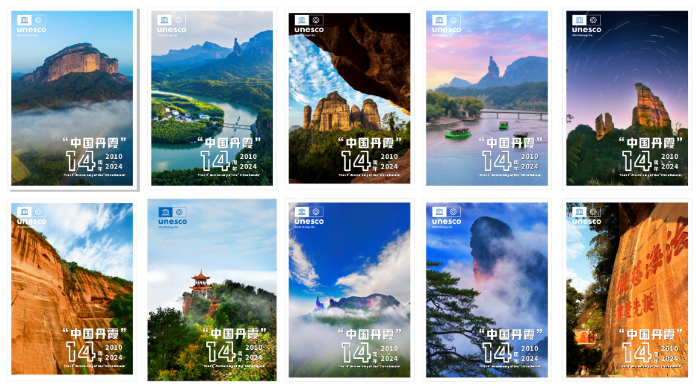Fourteen years of blooming. August 2nd is the birthday of China Danxia.
On 2 August, 2010, the 34th World Heritage Meeting was held in Brasilia, the Brazilian capital, when most of the 21 member countries agreed that China Danxia met criteria (vii) and (viii) of the World Heritage and agreed it to be added on the World Heritage List.
China Danxia comprises Danxiashan in Guangdong, Chishui in Guizhou, Langshan in Hunan, Taining in Fujian, Longhushan in Jiangxi and Jianglangshan in Zhejiang.
Criterion (vii): China Danxia is an impressive and unique landscape of great natural beauty. The reddish conglomerate and sandstone that form this landscape of exceptional natural beauty have been shaped into spectacular peaks, pillars, cliffs and imposing gorges. Together with exuberant forest, winding rivers and majestic waterfalls, China Danxia presents a resplendent natural picture. The sharp contrast of red rock against green forests and blue rivers is a striking feature of China Danxia and renders great scenic appeal. China Danxia sites have long been appreciated by both the general public as well as the academic world and further celebrated by artists. It is one of the most important scenic identities of China, and has even attained significance as religious shrines. Its significance is further elaborated by the countless paintings, poems and articles eulogizing these unusual beautiful sites since ancient time.
Criterion (viii): Compared with other similar areas, China Danxia is the outstanding example of warm and humid climate red-beds landform in the world. As a result of favorable geological, hydrological and climatic conditions since at least late Mesozoic period, China Danxia areas preserve and display much richer geomorphological, ecological, biological and scenic features for warm and humid climate red-beds landform than any place in the world. The component parts represent the best examples of “least eroded” to “most eroded” Danxia landforms, displaying a clear landform sequence from “young” through “mature” to “old age”, and with each component site displaying characteristic geomorphologic features of a given stage. China Danxia contains a wide variety of well developed red-beds landforms such as peaks, towers, mesas, cuestas, cliffs, valleys, caves and arches. Being shaped by both endogenous forces (including uplift) and exogenous forces (including weathering and erosion), China Danxia provides a range of different aspects of the phenomenon of physical landscape developed from continental (terrestrial) reddish conglomerate and sandstone in a warm, humid monsoon climate, illustrating both the range of landforms in relation to the forces and processes that formed them.












